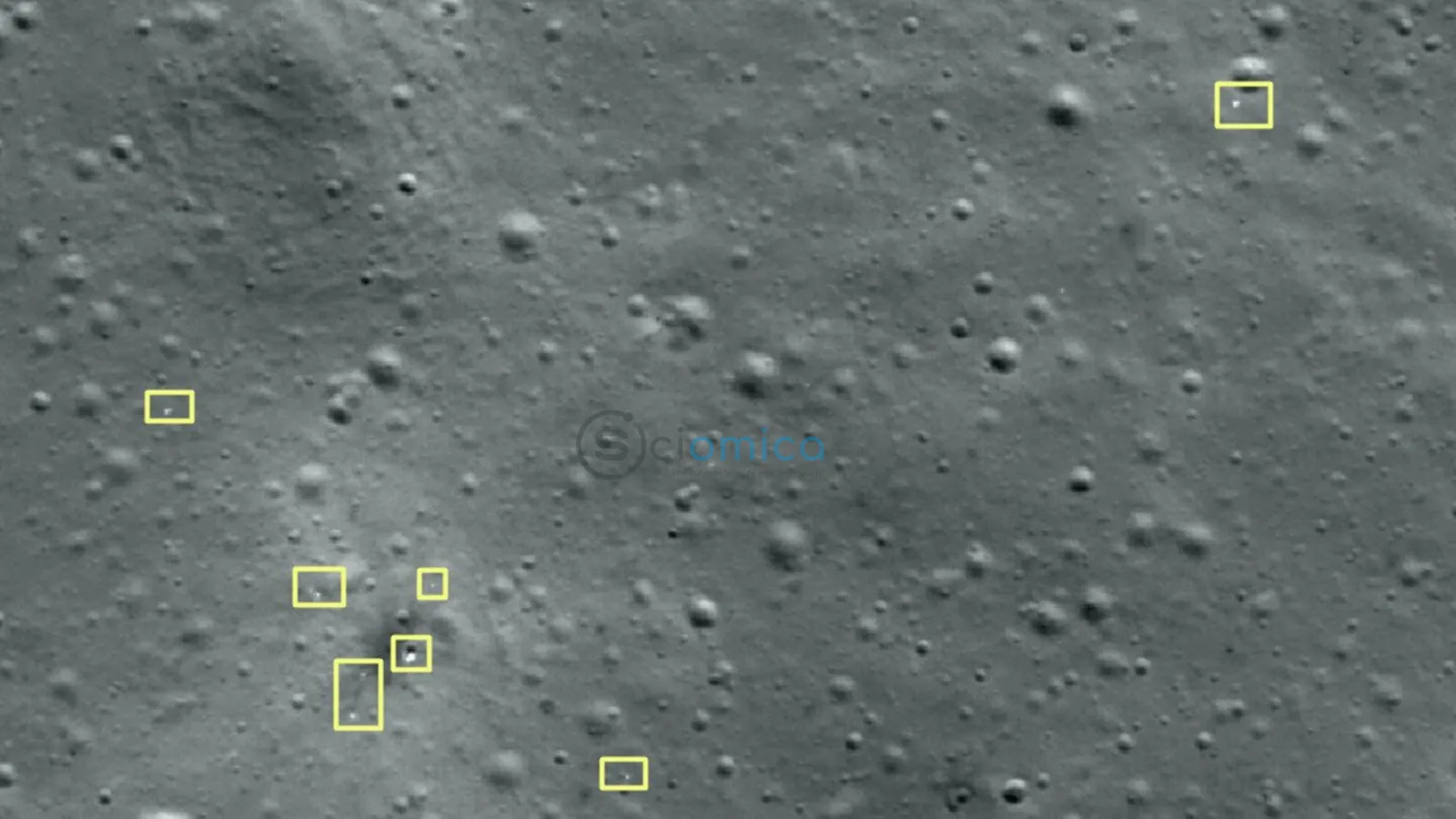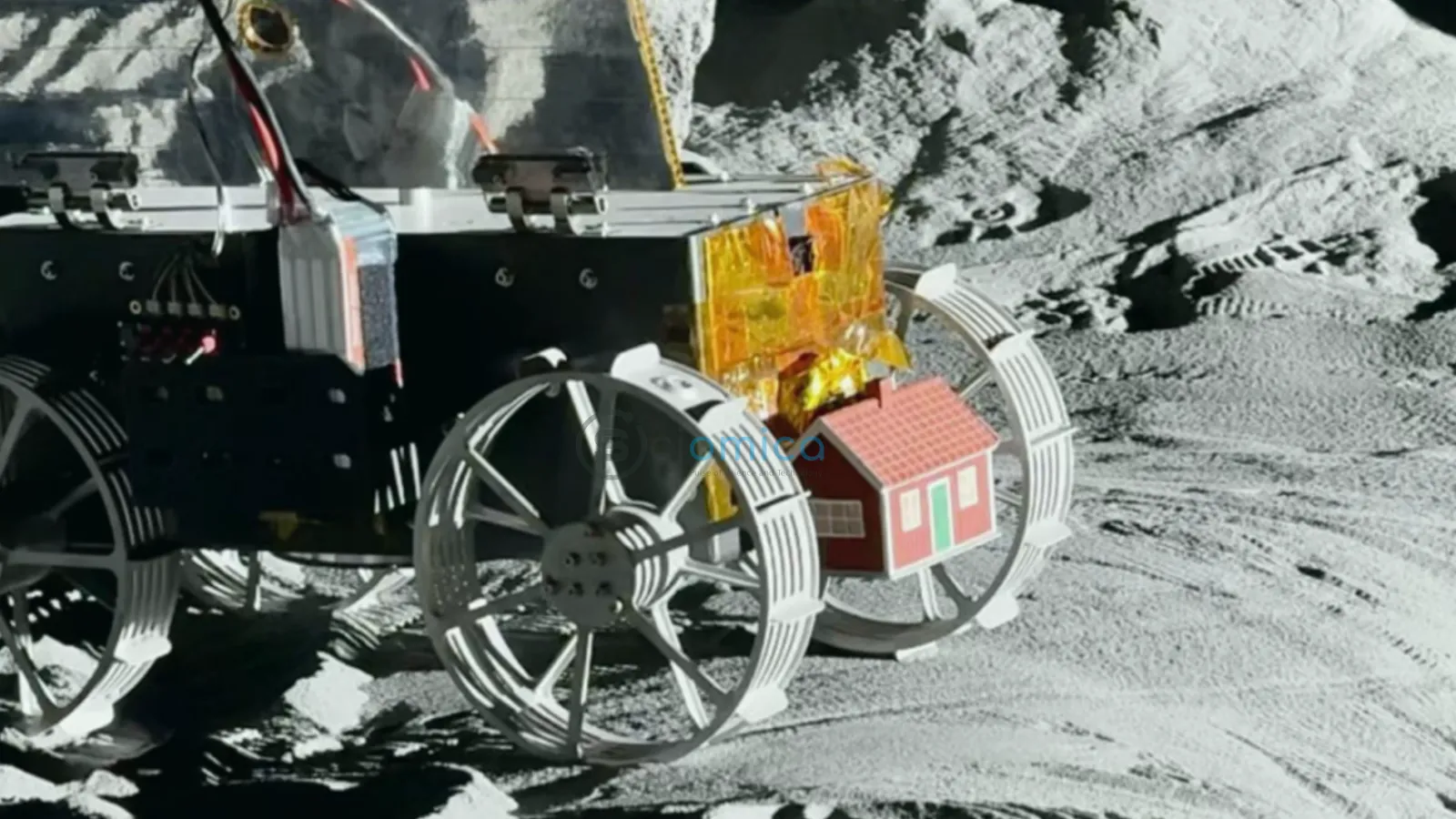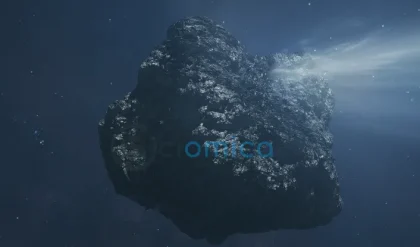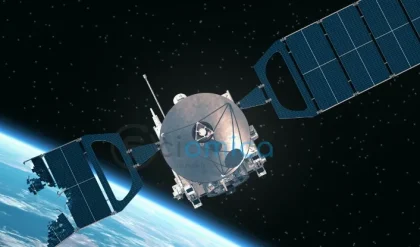
In a significant display of international collaboration in space exploration, NASA and the Indian Space Research Organisation (ISRO) have obtained photographic documentation of the Japanese lunar lander Resilience following its unfortunate crash on the lunar surface. The images, taken by orbiting spacecraft, provide a grim confirmation of the lander’s fate, revealing fragments of debris littering the vicinity of the crash site.
The Resilience lander, developed and operated by the Japanese private company ispace, was on a mission to touch down in a region known as Mare Frigoris, or the “Sea of Cold,” situated in the northern hemisphere of the moon. The planned landing date was June 5, and the lander was expected to deploy a variety of scientific experiments, including a pioneering European rover named Tenacious, which was designed to debut an art installation called “the Moonhouse” on the lunar surface.
Tragically, contact was lost with Resilience approximately 100 seconds before it was scheduled to land. Reports indicate that the lander experienced a “hard landing,” leading to its disintegration and the total loss of its valuable payload.
Following the crash, NASA’s Lunar Reconnaissance Orbiter (LRO) managed to capture the initial satellite images of the crash site on June 11. By comparing newly acquired photographs to earlier images taken prior to the crash, researchers observed a new dark mark left on the moon’s surface. This smudge, likely composed of regolith—the layer of dust and rocky material that blankets the lunar terrain—was displaced as a result of the lander’s impact, according to assessments from NASA.
ISRO’s Chandrayaan-2 orbiter later added to this visual narrative, releasing additional detailed images of the crash site on June 16. Analysis of these images uncovered at least twelve distinct identifiable pieces of debris scattered around the area. Astronomy enthusiast Shanmuga Subramanian publicly shared these findings, further emphasizing the importance of citizen science in monitoring and understanding space phenomena.
With images clearly showing sunlight glinting off the debris, scientists and the public alike are piecing together the remnants of Resilience’s ill-fated mission. However, the precise distribution of debris remains unclear, leaving some questions unanswered about the extent of the damage.
Data collected during Resilience’s final moments suggested that a malfunction with the lander’s laser rangefinder could have been a critical factor in the failed landing. The delay in distance measurement presumably prevented the lander from slowing down adequately to achieve a safe landing speed, as confirmed by ispace officials during a press briefing.
Resilience marked the second attempt by ispace’s Hakuto-R landers to achieve a soft lunar landing. Its predecessor fell short in April 2023, losing contact during its attempt to land on the lunar surface. However, in a contrasting success story, the Japan Aerospace Exploration Agency’s SLIM lander—which has been referred to as a “moon sniper” due to its precision landing capabilities—successfully touched down on January 2024 and remained operational for several months despite landing upside down.

A Surge in Lunar Exploration
The landscape of lunar exploration has been bustling, with several missions in the pipeline from various nations and private entities alike. Recently, U.S. companies have also made headlines with two lunar landings this year; the Firefly Aerospace’s Blue Ghost successfully landed on March 2, while Intuitive Machines’ IM-2 probe experienced a difficult landing, resulting in a sideways position and its demise just 12 hours later.
Intuitive Machines made history again in February 2024 with the Odysseus lander, marking the first American lunar landing in more than half a century, albeit landing on its side. In August 2023, ISRO celebrated a major victory by successfully landing Chandrayaan-3, India’s first-ever lunar lander, near the moon’s south pole, which later detected the first “moonquake” in decades before concluding its mission after 12 days.
Adding to the momentum, China’s Chang’e 6 lander successfully touched down on the moon’s far side in June 2024, subsequently returning lunar samples back to Earth—potentially yielding valuable insights regarding the early solar system and Earth’s geological history.
As the quest for lunar exploration continues to intensify, scientists and enthusiasts around the globe remain hopeful for future missions that promise to expand our understanding of Earth’s enigmatic satellite. The loss of Resilience, though disheartening, adds to the rich tapestry of experiences that not only shape the future of space exploration but also enhance collaboration and innovation among nations.






